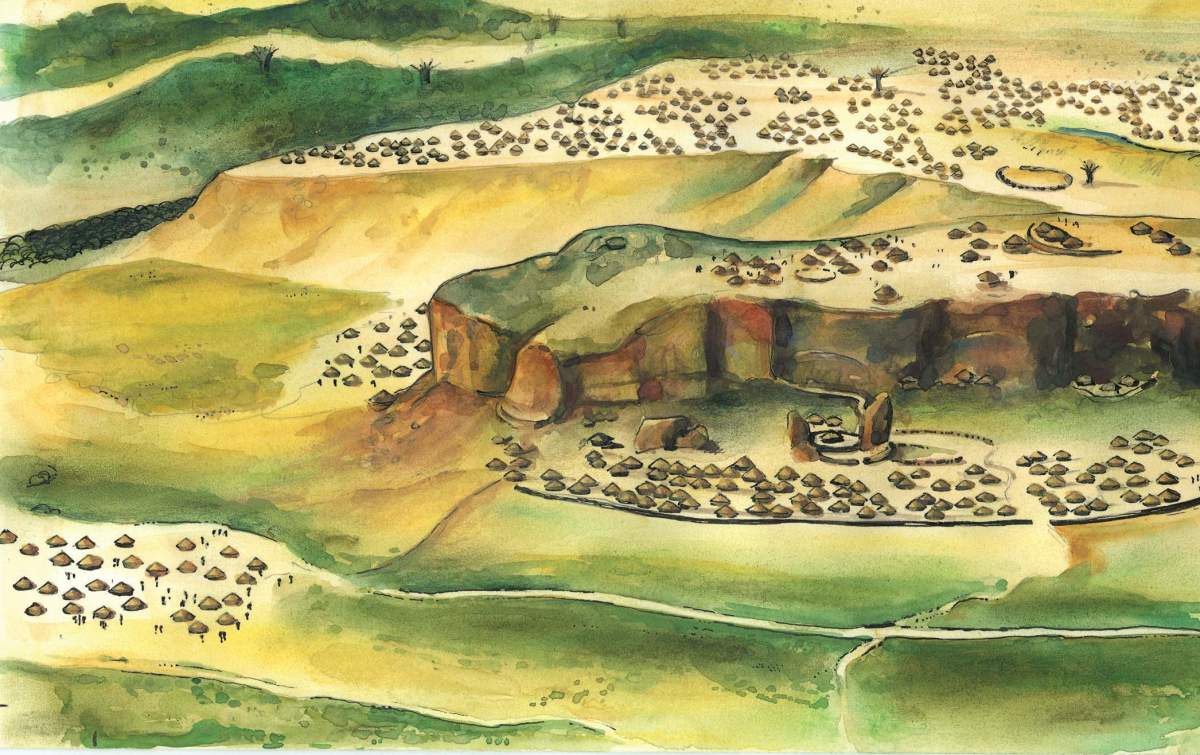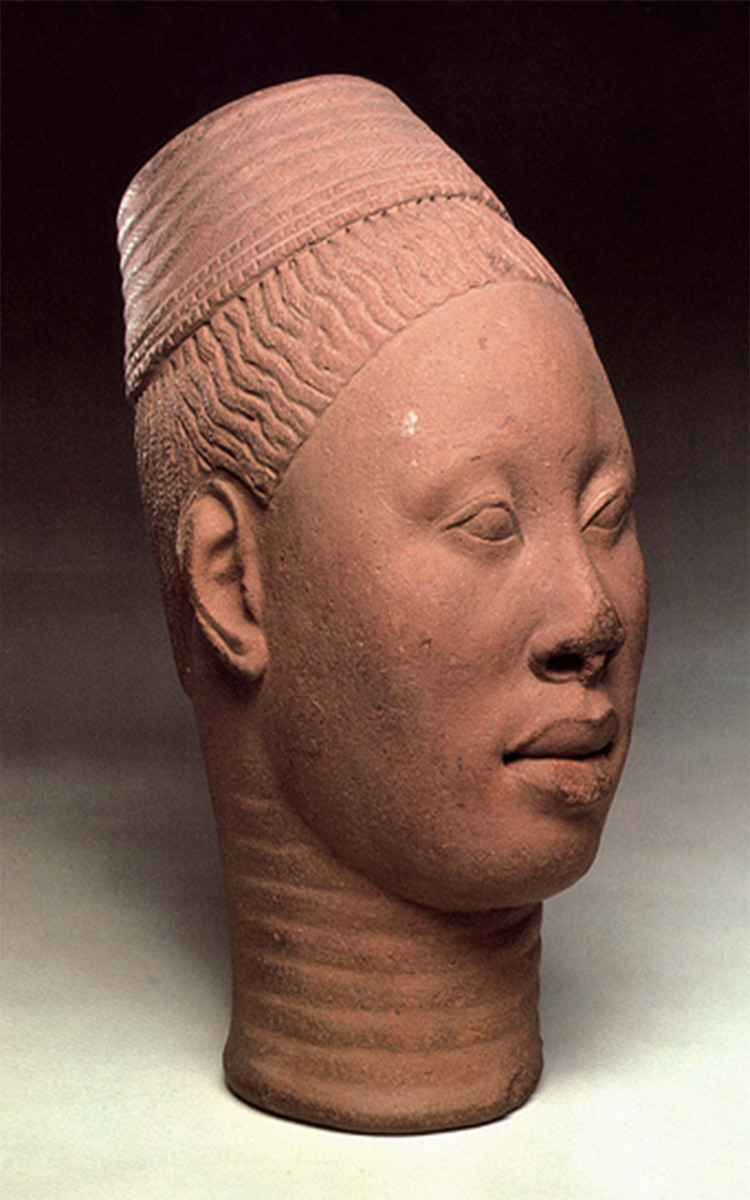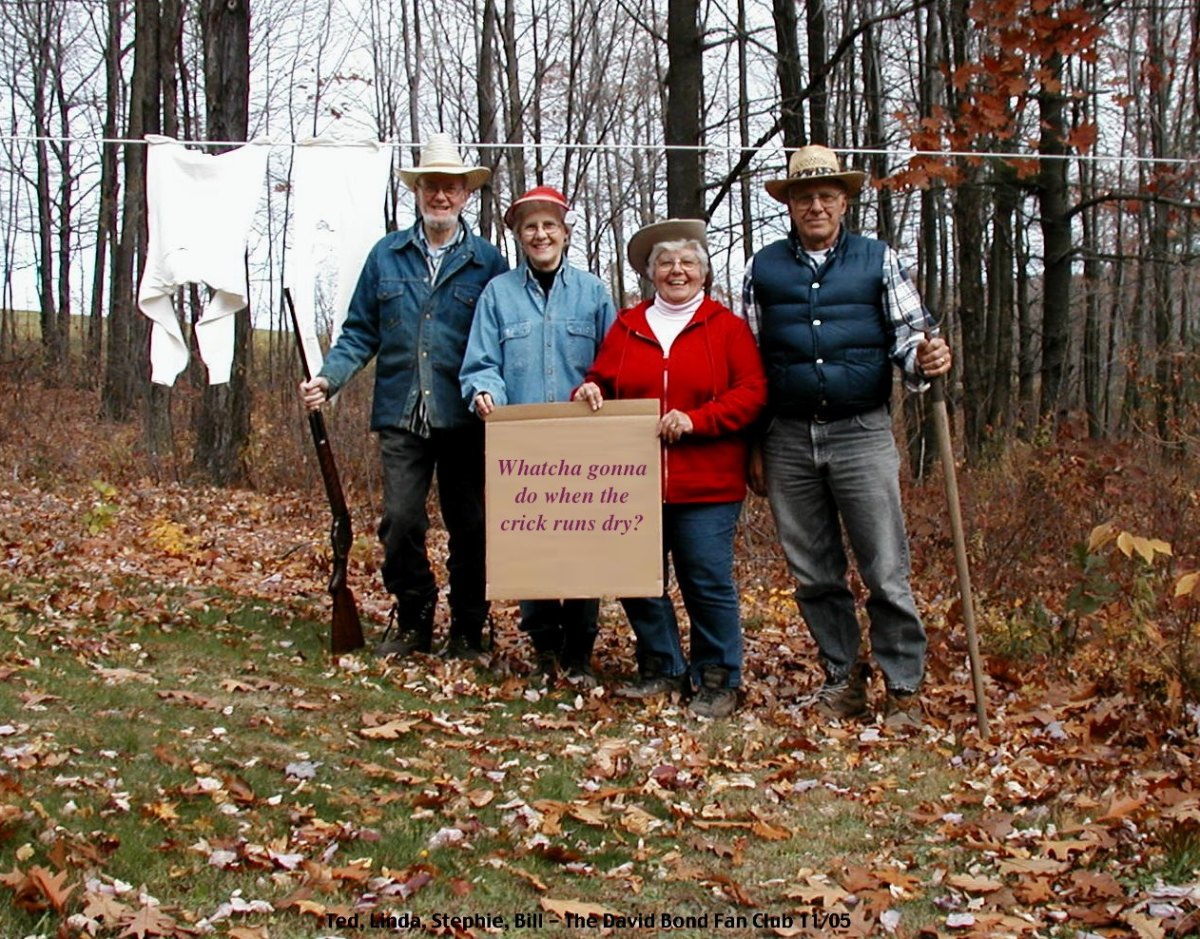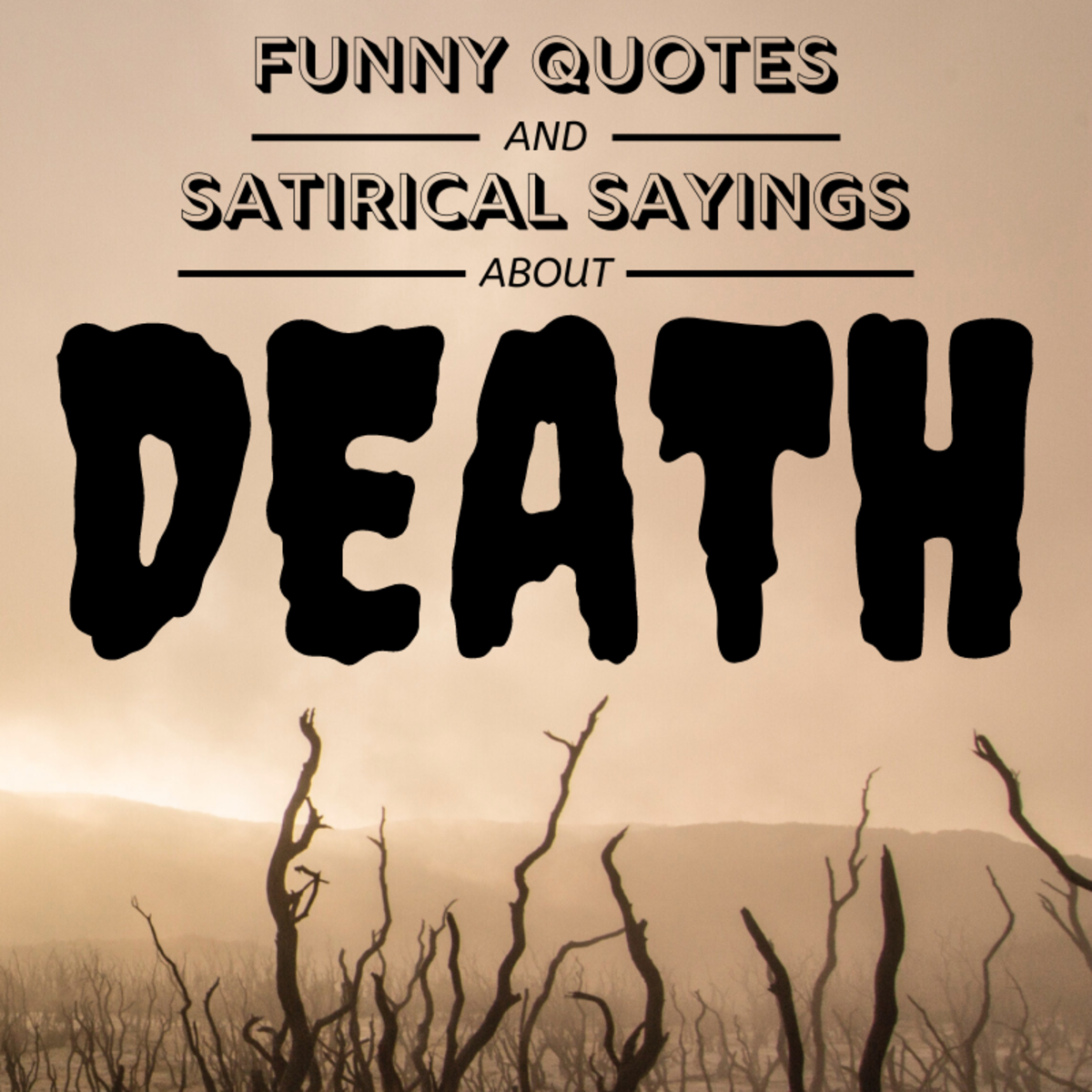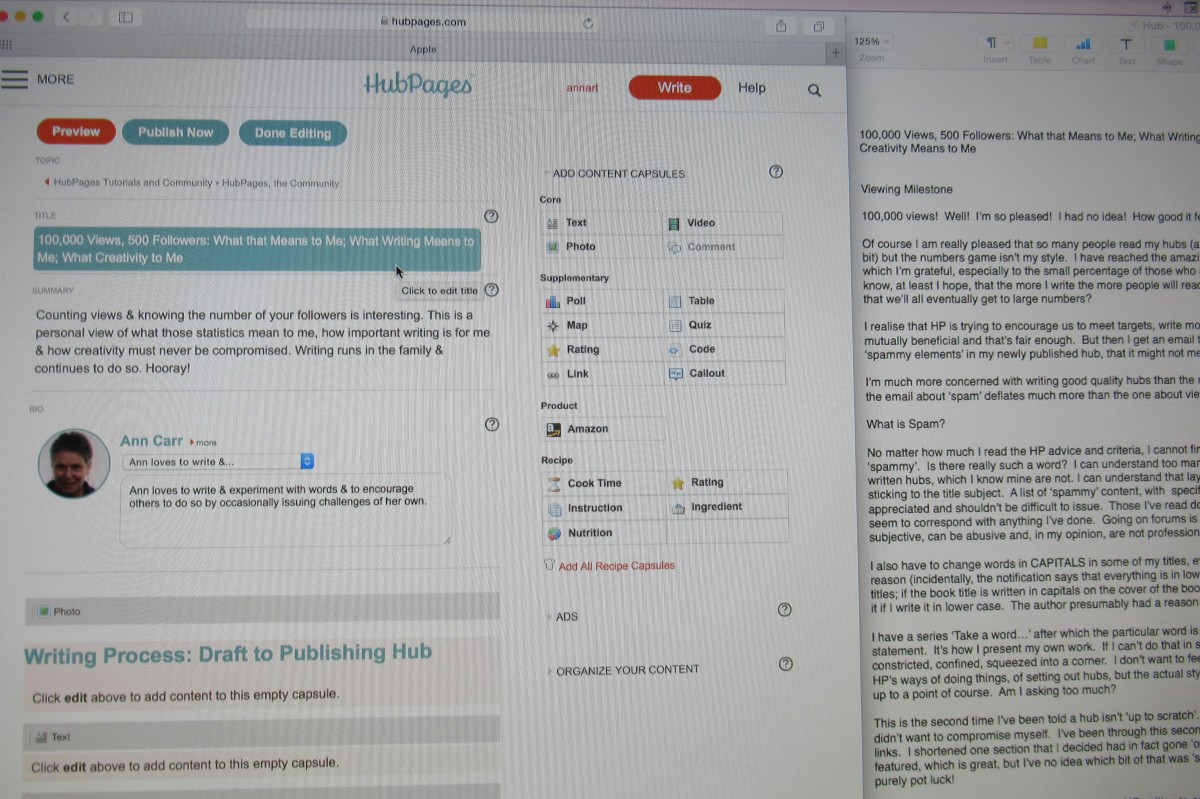How to Create an Immersive Setting
#3 of 100 Hubs!

Do It The Most Fun Way!
There are as many ways to create an immersive setting for a novel as there are novelists who achieved it. They all manage to build up enough detail about the world of the book that the reader is swept away into it and pays much more attention to the heroes' struggles than their own worries, and this will give them a good night's sleep when your meaningful novel of impressive literary merit gets their mind off what's keeping them up nights.
I'm not kidding, when you set out to write a book you're creating a homemade sedative better than any chemical. You're telling a bedtime story to someone's tired inner child who's been adult and responsible and good all day, is probably unrewarded and feeling overworked and sulky. That's the receptive state your reader's in.
Your state creating it is rather different, being the storyteller.
You need to give just enough detail to grab their interest and not so much it bores them to tears.
The one thing about good immersive backstory that's consistent across all the different writing methods novelists use is that a good immersive backstory is an iceberg.
Ten percent of it is on the surface and it's that 90% under the waves that'll grab ya and create all the cool plot twists you want -- building a good backstory is also going to give you the bones of good plot by creating inherent conflict.
So if you are building a happy Utopian world with a society that is everything you wish society was like, you need to crash test it on everything that can go wrong with it and all the new oppressive abuses it will create while remedying the problems in this world that bug you. Sure, you can eliminate racism and sexism and homophobia and incidentally also throw the baby out with the bathwater by eliminating marriage and personal relationships, so everyone is stuck having scheduled sexual release in anonymous computer-dating arranged matings. While breeding is all done with a test-tube.
Sounds like fun, doesn't it? Well, it busted the glass ceiling anyway. That was from the backstory of my first novel in print, Raven Dance. It's not the only key detail of the Utopian society, about which my poor hero said "They should never have called it Utopia." But it's one that some major plot points turn on and it sets up a lot of conflict by itself. You have to look at the dark side of good things and the bright side of dark things to give a novel richness.
What if a historical situation happened where a brutal military dictatorship was exactly what was needed for the survival of the people in the book? When that war is over, are they going to cheer the tyrant or overthrow him? What happens next?
Your backstory builds up on nine or ten unwritten novels for every one you write. In a long series of course, it can accumulate literally. Star Trek is immersive just because there is so much of it. The bad episodes and silly episodes and dumb repetitive cliche episodes are all part of its history -- and while they may not get aired as much as the good ones, they are also the reason why it's so easy for anyone to write Star Trek fan fiction if they've seen or read enough of the canon. I am pretty sure most of the writers contracted to do professional Star Trek books are either given a writer's bible or show that they have a thorough knowledge of the series as a whole.
The body of fan fiction doesn't count as canon.
But one of the fun and amusing ways to build up the backstory for your novel or a great backstory for short stories is to reuse the same one. Write fan fiction on your own fiction. Use a novel you did before -- even a failed novel you did before -- as ancient history for the one you're writing now. Ask yourself what'll happen to those people a century after the good guys won. Will those good guys be reviled as the great culture destroyers or something? Will the culture change without recognition? Or did the heroes become glorified as culture heroes for making genuine important reforms?
If they did, were they the ones the heroes set out to create or something they just did in passing because they were good people?
History, as Terry Pratchett tells us in Small Gods, is kings and dates and battles. That's a good place to start. Especially if you work out good plausible reasons for the battles. The king has crown-seeking relatives is a good reason, but so is living space, a growing aggressive empire from rivals, internal oppression of a class or group of people, meeting another culture and the cultural shifts of a new religion... you can start branching off kings and dates and battles in all directions.
Every one of them would make a good novel too.
In the 90% of your realistic yet speculative backstory, you have to ask What If? about the McGuffin.
The McGuffin or maguffin is the gimmick that makes your book a fable instead of a historical novel. If you're doing an actual historical novel you do know what happened or can find out, you ought to look up the real kings and dates and battles and pore over all the details of the period and you can't mix those things up with anachronisms and modern ideas without ruining the setting -- but need to make it intelligible to a modern reader.
You still have world building to do because you need to create the characters' families and maybe even the town, there are a host of things in a novel based on history or fact that can be and are made up. They can even lean toward topical modern issues rather than the ones the Victorians or the Renaissance thought were important. The story of an abused woman escaping her abusive husband and divorcing him only to wind up a single mother trying to survive is different in the Renaissance because she needed to get an annulment on a technicality of kinship or something or she needed to live in a Protestant country to get a divorce, so that makes it historical and interesting -- and topical and modern because you are dealing with issues today's single mothers face.
Leave the known for the made-it-up storyland of all fables and they have to make fable-sense. Everything in the backstory that shows should really help support the theme of the book and push the plot of the book forward, set up more conflict for the protagonists or help them when needed.
One way to do this is plot-driven backstory. It's my favorite method, organic-linear. I approach the book as if I'm exploring this unknown world and I don't know what the 90% is. I don't know any of the backstory and let it flow sketching in what's needed for the next scene. I decided a maguffin at the start -- and it is based on the 90% already being in my brain.
The one I'm editing now, Curse of Vaumuru, started with the one known maguffin -- I wanted a fantasy world set in the Pleistocene. I narrowed that to the North American Pleistocene near the La Brea Tar Pits for ease of research and so that I didn't go too far out doing the Pleistocene Zoo with African and European and North American animals migrating together across epochs and continents on land bridges that would've killed them all. So I read up on the Pleistocene and especially the La Brea fauna and jotted down the critters, vaguely remembered where it is near the Pacific and otherwise didn't worry about it.
No one knows what the people in the area were doing or believing at the time, not many fossils or buildings, so I had a cultural free hand that let me blow riffs on the general idea of tribal magic and let the commonalities of different types of folktales emerge into the story. No wizards and dwarves, more like shamans and medicine men and the tribal idea of "sorceror" -- a magician who can control spirits whether they like it or not and use magic to curse or heal. All the magic users can curse or heal.
So I had to construct my tribes by observation.
In every scene I was paying attention to what went on while intuitively writing and kept thorough notes in progress on everything from their beliefs to what they ate and wore and said. Naming traditions for genders mattered to help readers tell which tribe they were dealing with and how they treated each other. My evil bad guy cannibal tribe could not be evil in their own terms -- and they are not.
No, like some real tribes I've read about, they are a warrior tribe and very proud of being aggressive. They have funerary cannibalism and in their view, when they eat captured enemies they're not only stealing their power but binding those powerful spirits into their tribe. They'll prey on an enemy shaman or warrior but may enslave his wife and free her when she's participated in the feast and become one of them -- become "people" instead of "enemy-prey."
One of my best sources for good backstory ideas is half-forgotten real anthropology reading.
I don't need to get it accurate to headhunters in New Guinea. I need to keep it consistent with itself and keep building on it.
The looniest idea in a backstory, the silliest joke can turn into solid backstory and add to rich plausibility as long as you have that consistency. You can go the other end of the continuum of methods and be one of those organized writers who fills out the 500 question Backstory Questionnaire before doing an outline before starting page one of the rough draft. Either way, you still need to keep continuity -- either as you're making it up or in a separate set of continuity and backstory files that are constantly updated and edited.
Nothing is canon until it is actually published. That's something to remember. But every change you make in the backstory and every event that happens will ripple through to all of it and give a different view of everything that happened.
I could write a good science fiction novel on the founding of the poisoned Utopia of Raven Dance and those founders would be heroes, they would be doing the right thing every step of the way while making the tragic errors of taking it too far that led to the dystopia it devolved into. They built a way of life and were true to their principles.
All the people in the novel will do that, and their principles come from their culture, not ours. They may be reflections of ours or cautionary tales of how good things can be taken too far, like trying to make everyone equal by flattening out individuality, but it's not a good setting if the people in it don't think of it as what's normal, what's right and usual and have their own ideas of right and wrong.
It can even be useful to give theme statements to your nastiest villains as they do grab attention and it makes them more human to shine for that moment.
Terry Pratchett's comedy fantasy novels all share the same backstory. It takes a lot of work to build one and if you get a good one, building a series in it only makes it richer like a good sourdough starter. Terry Pratchett's Diskworld may be a loony premise from the get-go full of cliches and fairytale events -- but there is a good sound reason within the rules of the world why it runs on fairytale principles. The magic is consistent with itself. Stories -- the ones everyone knows -- try to happen and rope people into them.
It has its depths because that happens in real life too. How many women's hearts get broken when they find out what life's really like after Prince Charming swept them off their feet? Lots. The stories are known and they set people's expectations in life, they happen all around us every day and you can spot all the characters in them if you just think about your coworkers and acquaintances.
When we write any fables, any fiction, we have the entire body of all the fables we know as a deeper added layer of backstory under the backstory. There's shorthand within genre. If you mention elves you need to add a little description just so the reader knows if they're Tolkeinesque (Nordic Alfheim) elves or the Little People, which ethnic flavor your elves have, you have a broad range of possibilities for what elven culture is in your world -- and some commonalities.
They're going to be more magical than humans, probably live longer, have a rich culture of their own and may be rather bigoted against humans. Yep. It fits. Tall blond people who don't like the short dark ones. Reflections of Europe.
This is also where Cliches and Archetypes mix.
Cliches are archetypal stories told badly.
Archetypes are the deep bones of the story that generate a lot of amateurish cliches because that's what the beginner expects the story to be -- from a lifetime of variations on that story.
Originality can come from juxtaposition. I'm starting to see in professional books and movies a tendency that was a huge stream in fan fiction back in the day, when I was a kid. This is the fusion of one story into another, or several into one. What if the Predators met the Aliens from Alien? They actually did this in the movies and it sold like hotcakes, the people who did it got license to both and ran with the idea that both of those nasty dangerous nonhumans coexisted -- and in that combination they also made the background of the Predator species a lot more interesting, because those Aliens are irresistible to a hunting race like the Predators.
The more different sources you draw on, the less like plagiarism and the more like influence it becomes. If you just copy Tolkein you have fan fiction. If you blend it with a little Clive Barker and something creepy from Harlan Ellison and that sweet moment from Ray Bradbury and that cool thing Stephen King could've done with that side character... all of a sudden you will tie literary professors in knots in a century trying to figure out what was on your favorites list and made you think of doing a dinner scene that wasn't based on the Last Supper.
One lit professor told me as if it was fact that all dinner scenes in novels are based on the Last Supper.
It naturally led me to create some that weren't and use the symbolism of a dinner scene for an equally deep and important tradition -- not the host betrayed but the custom of hospitality itself, the renewal of the custom of hospitality, the building of community. Not all dinners are Easter. But you can use that one and it'll have some punch.
Steal from the Bible and it'll have resonance for a lot of people. Same with classical mythology. Set it in outer space and all you have done is establish that the stories are remembered in culture whether literally passed on or not.
Your cultural decisions will have ramifications and consequences. This is where continuity creates itself and originality. Anne McCaffrey set up the backstory of Pern and decided among other things like including dragons and telepathy, that the people of Pern did not have any fiction. They didn't have religious myth and they didn't have fiction, they had history instead and a cultural pattern of expecting all stories to be literally true and discarded if proved untrue.
That limit in itself would've left me unhappy living on Pern and I'd never fit in. But it gives Pern a unique flavor and a depth that picking up the dragon archetype alone would not have done. It was an idea, an arbitrary thing, a historical event the founders of the colony decided probably on some intellectual level, burned the books and left behind even the mention of fiction or the word for it as they chose to live by their pattern -- and they survived, the culture evolved in response to the planet and stabilized and it has great plausibility.
So when you do something like that, whether you sit down and sort it all out before starting to write or you just take notes as you go, that's what can give an otherwise obvious and familiar story great originality. Ideas like that, like questioning whether fiction is necessary for human beings to live happy and useful lives and whether religious stories and myths are necessary for people to have a spiritual depth and a conscience are layers in a book that make the difference between an immersive setting and a cheap backdrop borrowed from a roleplaying game.
In fact, you can even start with the roleplaying game as your premise -- because a backstory builds like a pearl inside an oyster, in layer on layer on layer of detail. Anything can be the seed of the pearl. Something about the sketched backstory of the RPG adventure module was the kernel of that story and is the essential element for your plot. Change the things that don't wreck your plot to change them and bring in things that push it forward, and all of a sudden you do have character-generated backstory -- which is always more intense.
Another good source if you want to start from history and mangle it, is to look at the great military blunders and remember that no army and no general is at its best all the time. Some just get lucky. Others just get stupid, they have a bad day and do not see the obvious defense strategy that a ten year old could point out with 20-20 hindsight playing with toy soldiers, and something historical happens that changes everything.
Don't be afraid to let that happen. Don't force perfection on characters even in the backstory. Don't make the ancestors actually be as perfect as they get praised -- the praise of ancestor-loving patriotic characters' forebears comes from blindly ignoring their flaws, blaming others against all logic.
History is written by the winners.
If you want to enrich your novel's backstory, write up a rough outline of how it looks to the losers. Describe your villains as heroes and your heroes as villains in terms of their own culture. A Homeric conflict with heroes and stupidity on all sides is going to be more gripping than the cheap-shot black and white All or Nothing "good versus evil" story.
Tolkein's great Lord of the Rings gets held up as a great story of good and evil -- but throughout it good people do bad things and dumb things and bad people have their moments. I will never forget that point in the tower of Cirith Ungol where Sam is climbing up with Sting and a couple of scared draftee orcs are describing him to each other, terrified of our beloved hobbit as the orc-hunting monster he is from their point of view, more scary than Shelob because they don't know what he'll do beyond his best to skewer them.
So whatever the slant of your final book, look at the backstory under it from all sides. Understand where the villains are coming from and why they think they're in the right. Work out how they rationalize their behavior -- or even if they have to.
My cannibals in Curse of Vaumuru are not rationalizing their eating humans. To them it's sacred and good and the best way to live and they are the greatest toughest meanest warrior tribe in their world. They scare everyone else and want to. Any non-cannibal saying "You're evil and terrible" is complimenting them on something they think well of themselves for. They don't deny that people don't want to be eaten, they expect that as a natural reaction so the "evil" slides by them as "irrelevant." It'd be evil if someone killed and ate them too, that'd be a rival and demand vengeance.
But they're also honoring any enemy they think is cool enough to be eaten, it's a compliment most people would rather not get. One that any of them would appreciate on his or her demise and know that they aren't really gone, they will continue within the tribe and all the people they love down through future generations. That's what consoles them for death. That's what eases the hearts of their widows.
When it is about the dragons or the dinosaurs or the nonhuman beings in your backstory, that has to be made sympathetic by looking at it within their point of view and observing a living creature or a natural process with accuracy and sympathy. Easy with conscious living things. Blowing riffs on sentience and looking into the eyes of an octopus to ask what culture it would build if it had the capabilities of a human mind is a great science fiction exercise. A good starting point any writer could create a good original work from -- without stepping on H. P. Lovecraft's wonderful Cthulhu, who was also mentally ill.
Its roots are as old as Aesop -- the creature has to be blended with humanity to be intelligible so that it's differences can be understood by the reader and what it has to say, what means something to humans about this creature's habits, is shown rather than told. We are always learning from other species. I suspect leaders have looked at anthills from above since there were people wondering how they could get humans to behave that way. Or admired the discipline of a wolf pack or the social graces of a cat, the cleverness of a crow. Our animal archetypes are often strongly rooted in the animal's behavior.
Far from never interacting with alien species before, we've been doing that almost as long as we've been human, at least as long as we decided to cooperate with dogs and develop a social symbiosis -- we're smart enough and social enough to cooperate with other species. That makes stories about aliens deeply relevant in a long term more than topical sense. They stand for social divisions of other groups of humans, who may be weirder to us than our domestic animals, and they are also a timely theme because we can talk to them on the Internet and read their weird opinions handily translated into our immersive trade language.
That is a long term, deep, ongoing source of conflict and successful or unsuccessful resolution good enough to keep Star Trek rolling for most of my life and beyond.
So you can go about building an immersive setting just on a thought experiment, an idea -- or build it up organically from the action of characters and their interaction with their environment. Either way, what makes it hang together is its consistency and complexity. Once any backstory reaches a certain degree of complexity, it will jell into something solid -- as long as it has plausibility within its own environment.
Diskworld physics are sound because they are consistent, because life would behave that way if magic functioned that way. Its sheer consistency and cultural coherence gives it simultaneous richness and familiarity. So don't worry about either familiarity or originality. Both happen if a good backstory is consistent and plausible within itself.
My last point on backstory is something like doing a landscape painting.
If you're doing a big panoramic landscape, don't show much detail and give the great sweeping motions of history. Stop for key details on which great events turn and not much else. If you're closing in on the lives of the mice in one building in a rural village, then you can get into close detail on everything about the village and the taste of grain and which mouse's uncle built the cat trap near the hole -- and show a lot of intricate detail by turning that small scene into a fat fantasy series like Redwall.
What's important to the plot gets close focus. What's not important to the plot gets rendered loose and vague -- but it helps to know it even if you just trust that your unconscious does. Paint broadly to give yourself elbow room in the distance. I didn't actually write out all the arguments between the founders of Utopia, just one or two that were relevant to the plot of Raven Dance. If I wrote the prequel I'd have to put those in but probably find lots of surprises among the founders.
So build up a setting that makes sense in its own terms and throw in everything and the kitchen sink -- everything that fits and pushes your plot forward will reflect into future volumes and related stories. Many authors find after years that unrelated novels connect and share a future history. Heinlein, Stephen King and many others start seeing those connections and sometimes deliberately write bridge books once their personal backstory gets solid enough, because that gives a setting another exponential level of realism. That's where unexpected connections and themes and meanings start to become universal, because we writers are all people living in this world and writing in this language.
Have fun with it. Write the book you want to read, and keep good notes so the next one doesn't contradict it -- or find a good reason for the contradiciton that solves the puzzle.
One character of mine refused to have consistent eye color. She had grey eyes in one scene, blue in another, kept flipping back and forth until about three books later I realized there was a pattern to it and a reason for it that completely made sense -- in a world where it's very easy for a woman to change her eye color. The quick easy explanation made obvious the first time she appeared was "she's a frequent liar and often disguises herself." The other reasons were more intricate and came up later. It's fun discovering things like that and sometimes the continuity fixes can make a book richer than it would've been without the blunder.
So treat any major inconsistences as opportunities to find some way they can reconcile way out in left field -- if rewriting won't fix the glitch, there probably is a good reason for the apparent inconsistency.

